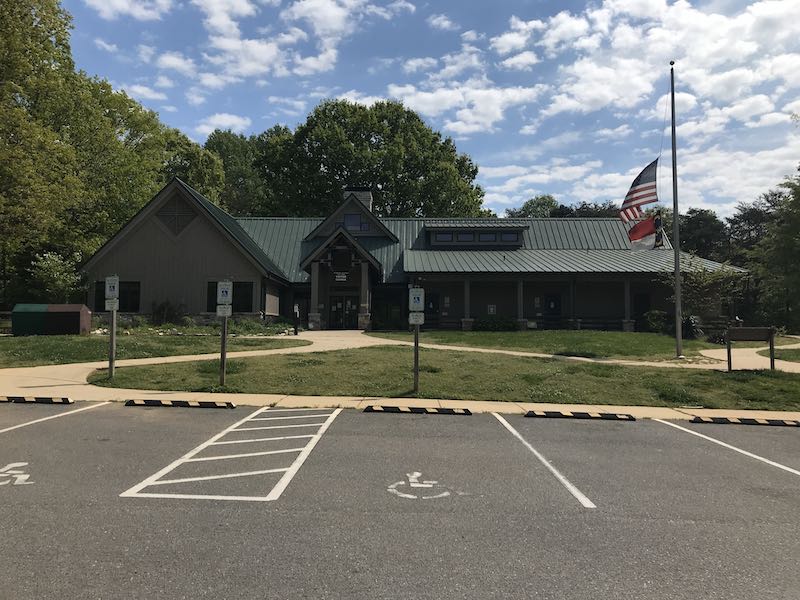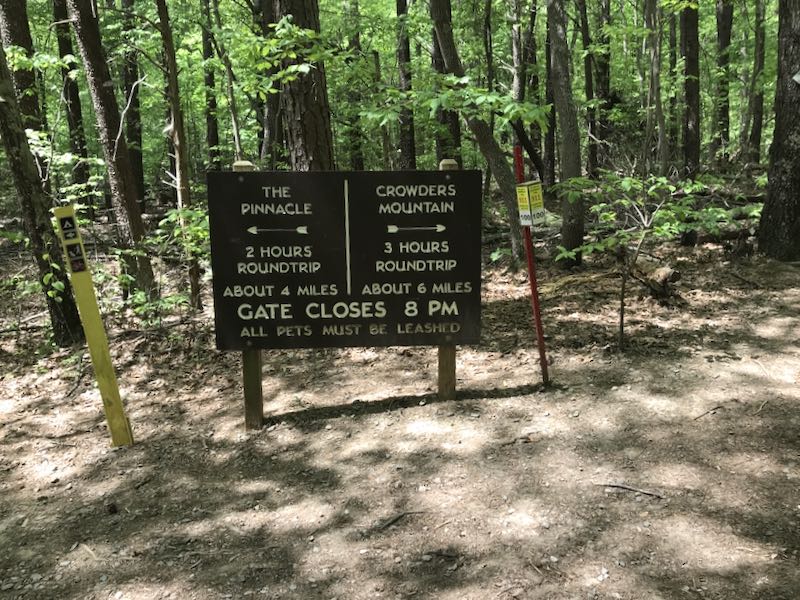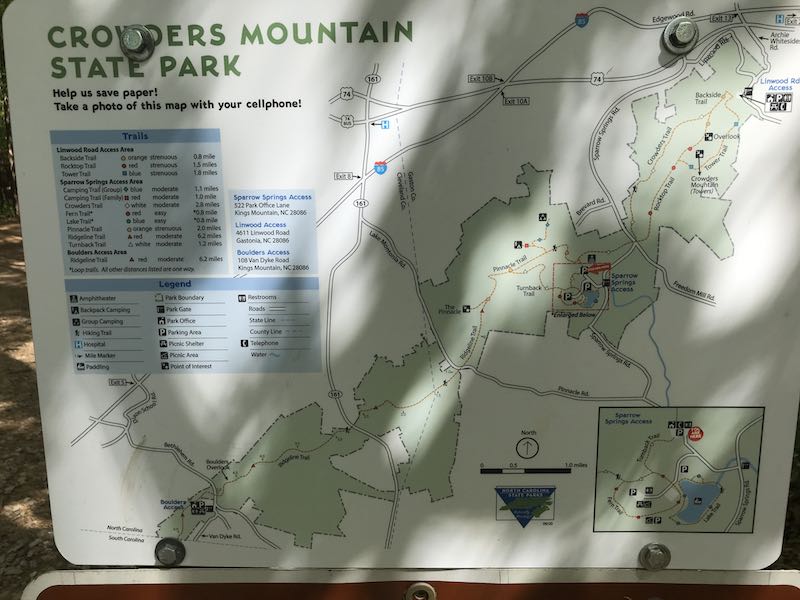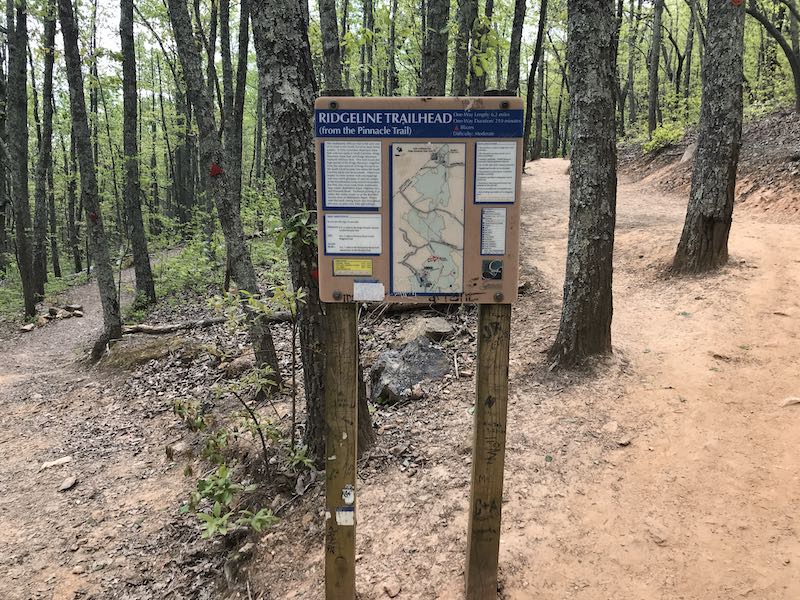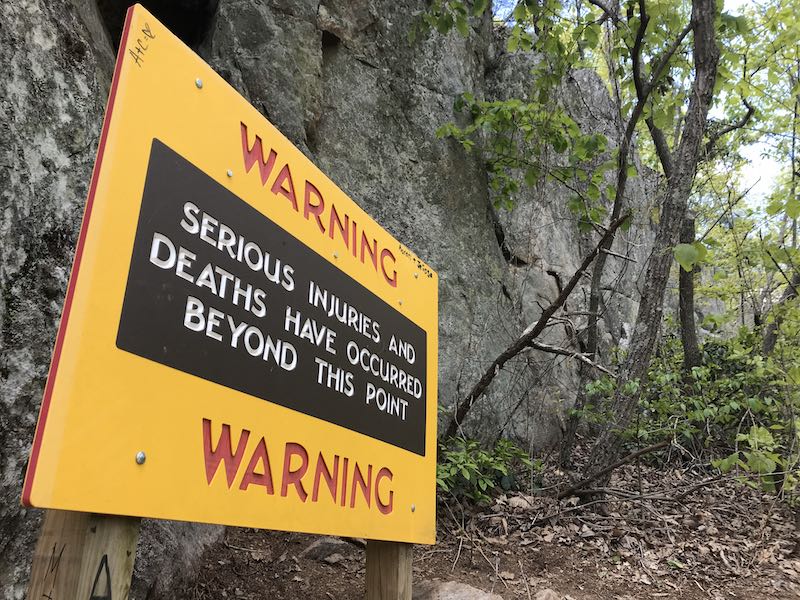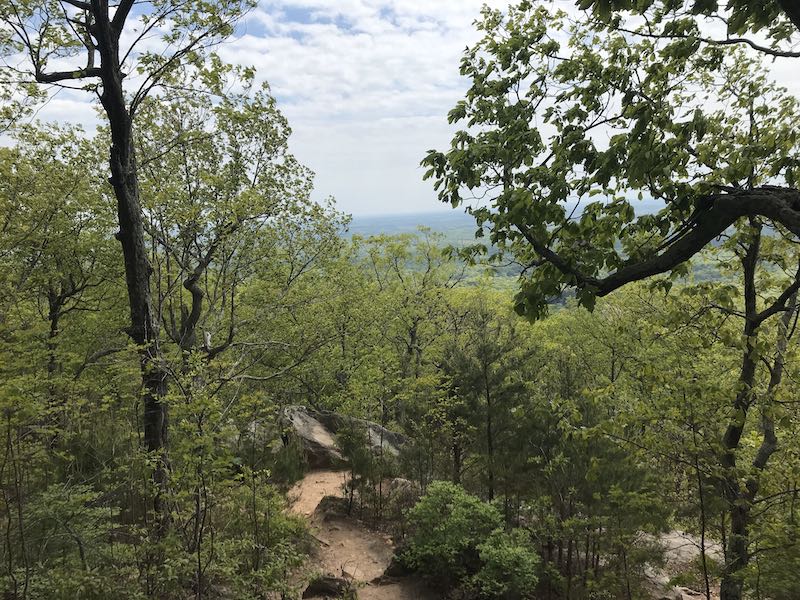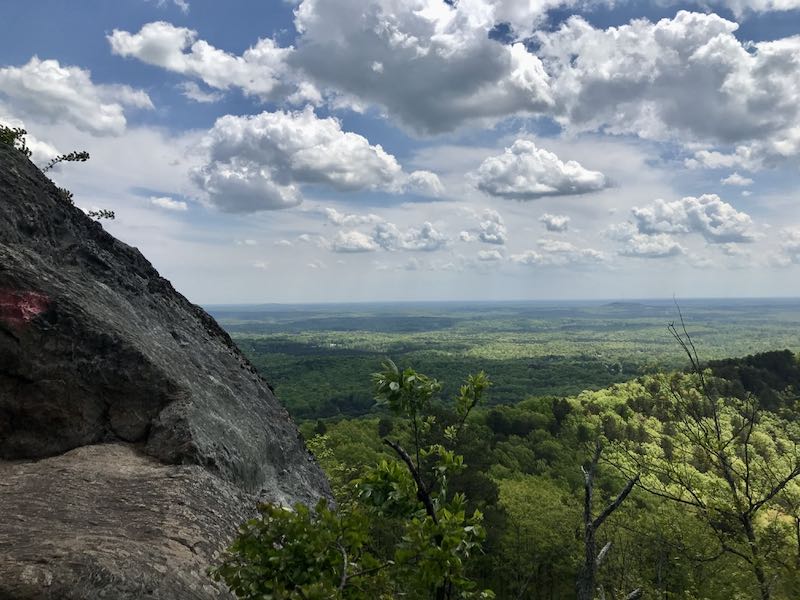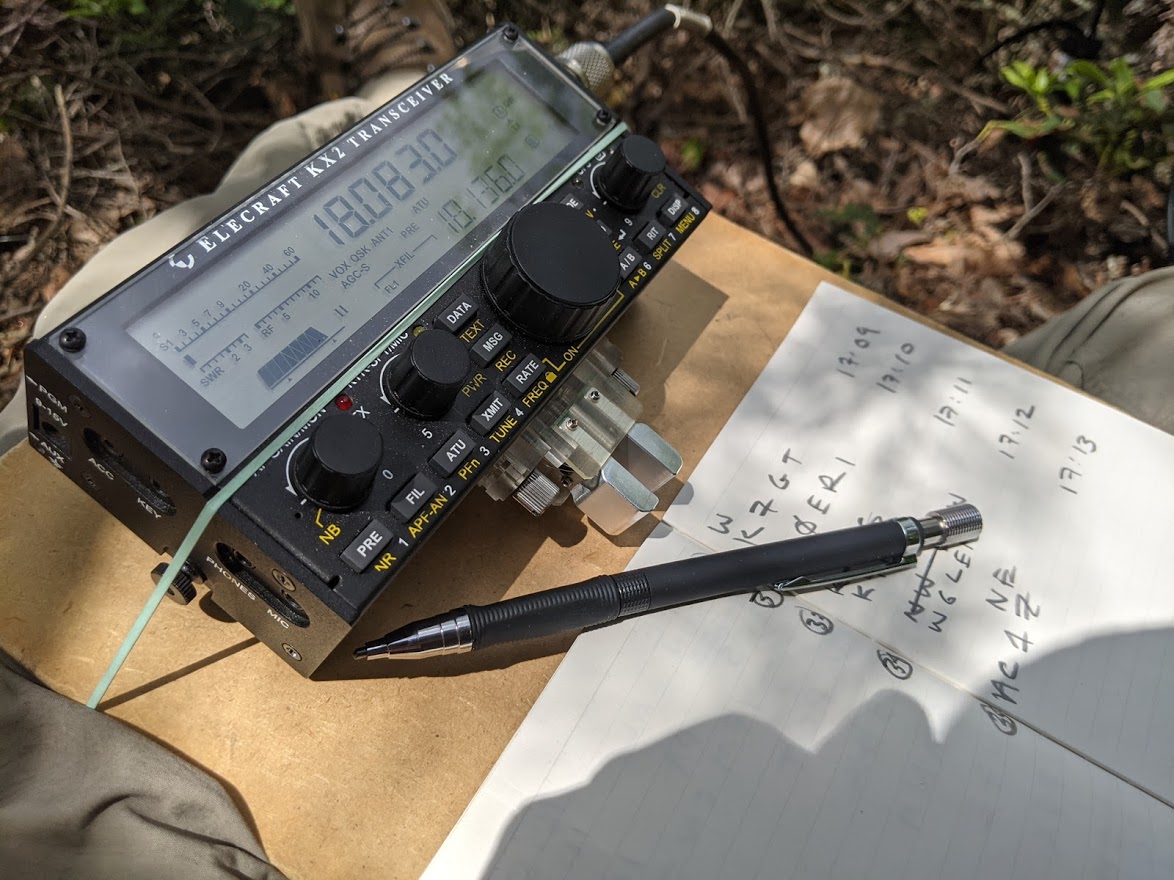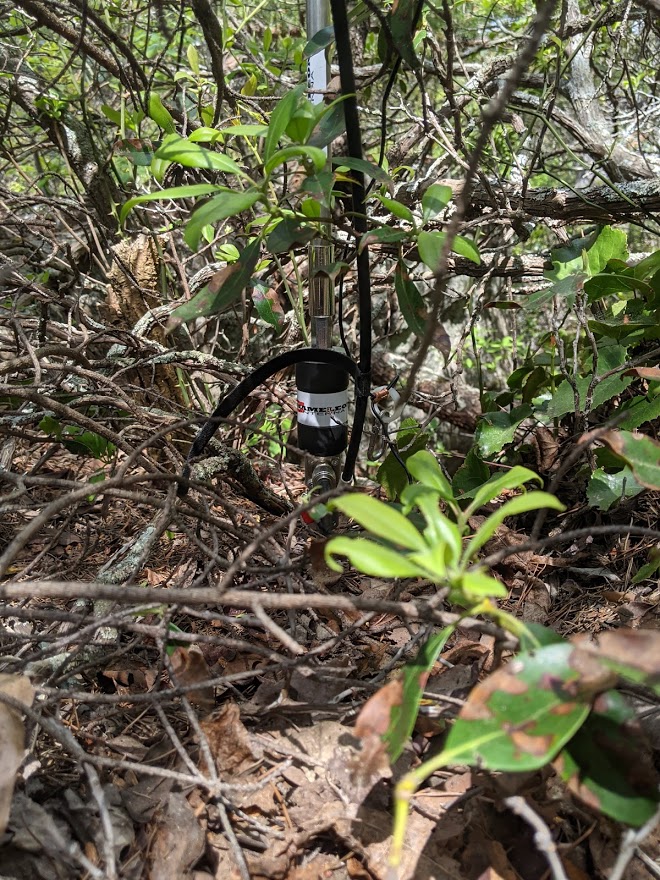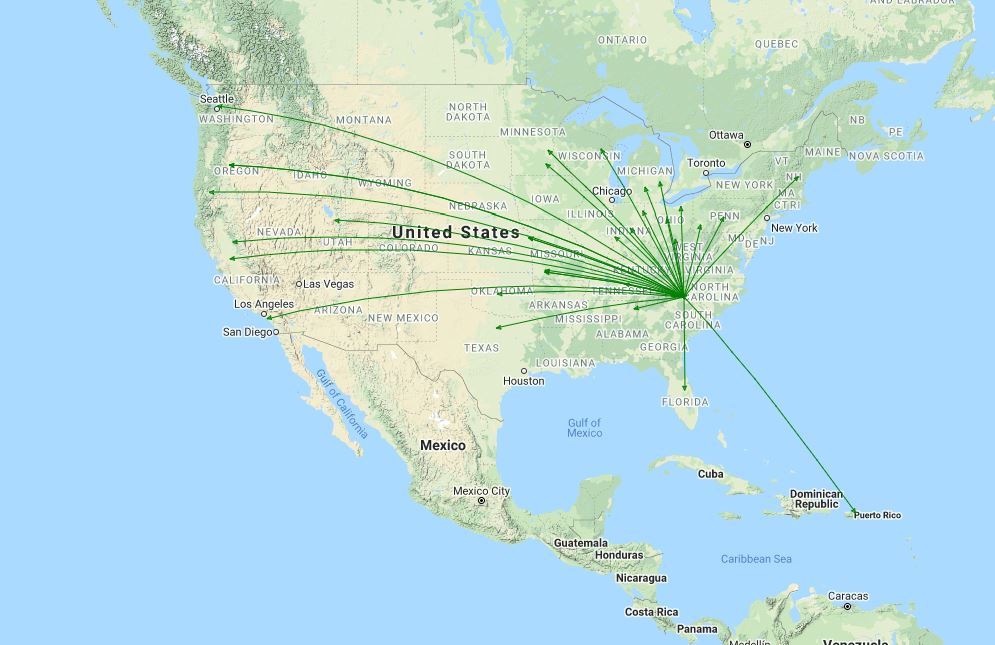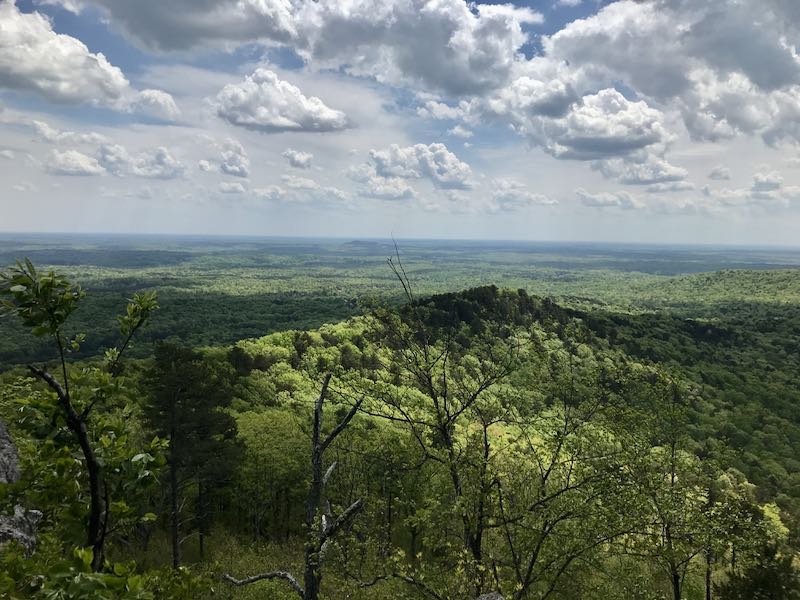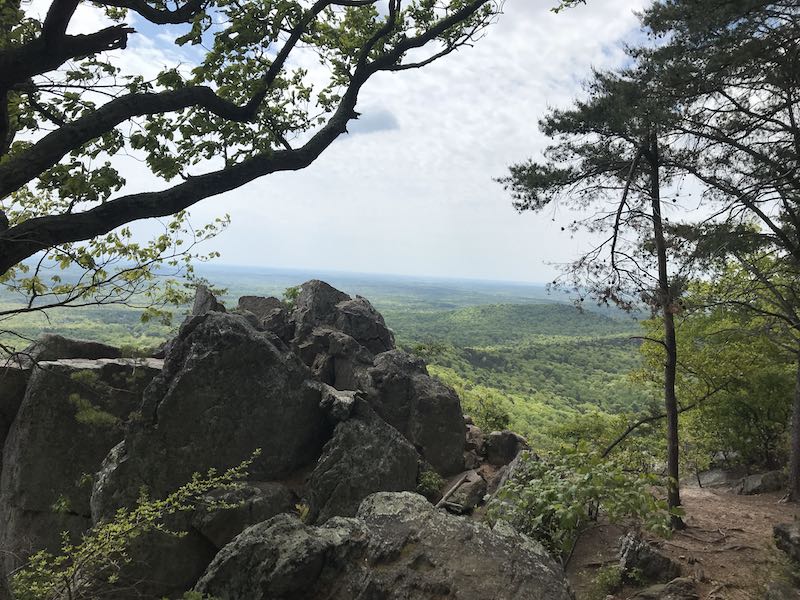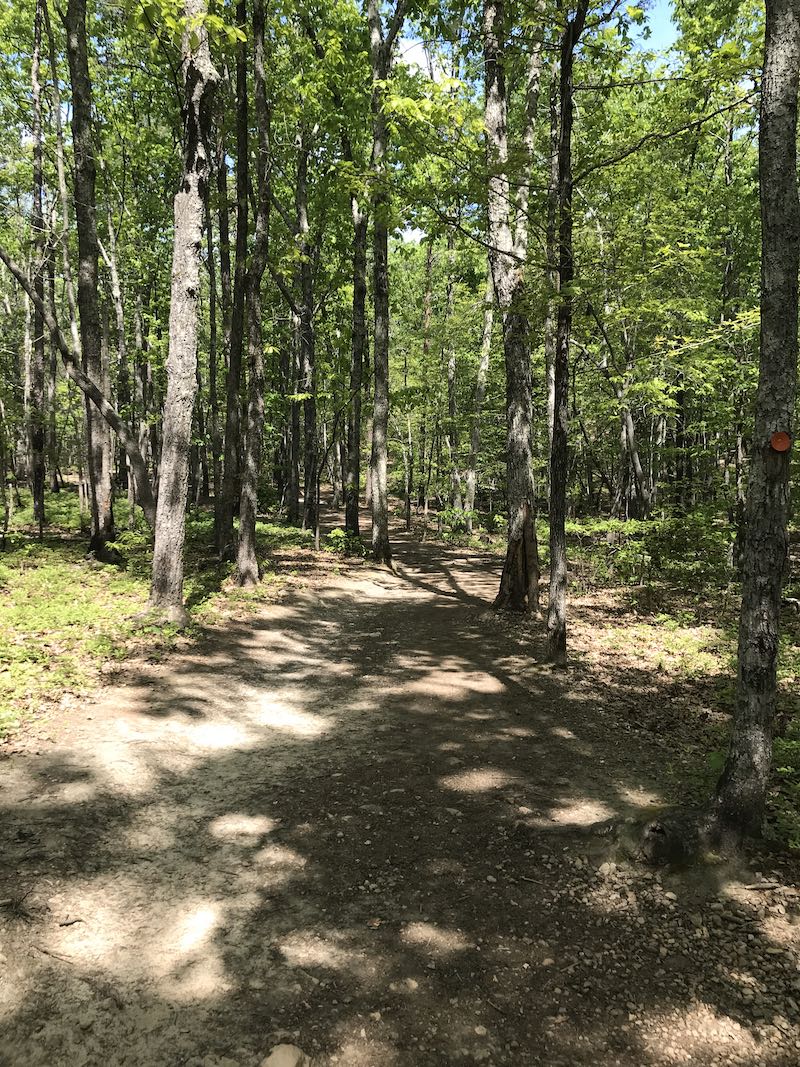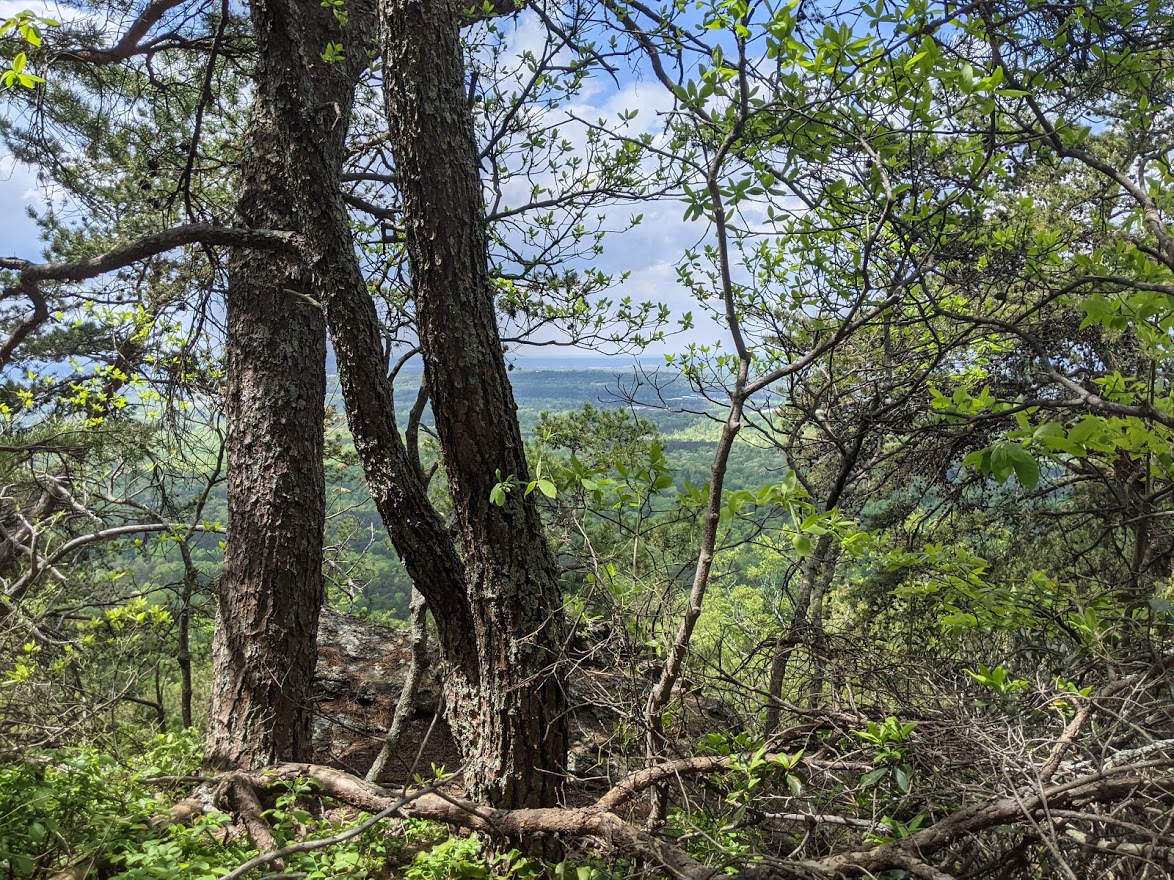"Summits On The Air" with W7MRC, Amateur Radio, Rhodesian Ridgebacks, Field Craft, Living in Montana, Old 4 Wheel Drivers, Mountain Bikes, Hiking and "Just Getting There"
Wednesday, April 28, 2021
CELEBRATING 10 YEARS OF SUMMITS ON THE AIR IN COLORADO by BOB K0NR

The Summits On The Air (SOTA) program originated in the United Kingdom but has propagated to most countries around the world. The program came to Colorado on May 1st, 2010 with Steve/WGØAT sending a CQ from Mount Herman, just west of Monument. Today, the SOTA program in Colorado (called WØC-SOTA) is very active with roughly 180 activators that operate from Colorado summits.
To celebrate our 10th Anniversary, WØC-SOTA is organizing a 10-10-10 Event with a challenge for Activators and Chasers alike. (Activators operate from summits, Chasers try to contact them.)
Activator challenge: Activate 10 (or more) 10K feet (or higher) summits (in Colorado/WØC) within 10 days.
Chaser challenge: Chase Activators on 10 different (or more) qualifying WØC summits (10K or higher) within the 10 days.
Event Date: We will kick-off the event in conjunction with the Colorado 14er event on August 7th, 2021 and conclude on August 16th.
Everybody is invited to participate, either as an Activator or a Chaser. Block off these days in your calendar now and start planning for how you can participate. Feel free to operate as much or as little as you would like. It is all about having fun messing around with radios. Any HF, VHF or UHF band can be used for making SOTA contacts, with the most popular ones being 40m (CW & SSB), 20m (CW & SSB) and 2m (FM).
There will be a leaderboard on the W0C-SOTA website showing all participants who meet one of the challenges. More details will be announced on the WØC-SOTA Website as soon as they are hashed out.
For more information on the SOTA program in general, see the worldwide SOTA website.
Full Disclosure: May 1 is actually the 11th Anniversary, but the COVID-19 Pandemic interfered in 2020, so we are catching up.
progressingamerica: What is the relation between the Founders and the ...
Never Be Forced into a Face Mask, a Vaccine, a Covid Test, or Any Other Public Health Mandate: How To Do That and Why
ACTIVATING THE PINNACLE: AMAZING SOTA & POTA FUN WITH THE ELECRAFT KX2 AND CHAMELEON MPAS LITE by THOMAS WITHERSPOON
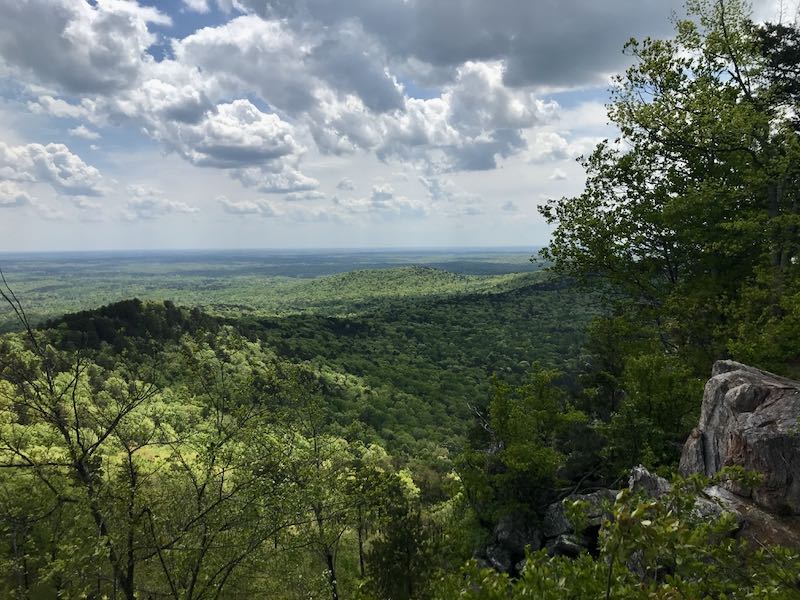 Last Tuesday (April 20, 2021), I decided to make a detour to a park I had never visited before: Crowders Mountain State Park (K-2726).
Last Tuesday (April 20, 2021), I decided to make a detour to a park I had never visited before: Crowders Mountain State Park (K-2726).
It’s actually quite odd that I’ve never activated this park during the weekly trip to do a little caregiving for my folks: Crowder’s Mountain State Park is a reasonable detour especially compared to some of the more remote parks I’ve visited recently.
What’s really impressive about Crowders Mountain is that although it’s not as large as a national park and it’s very close to the city of Gastonia, it has no less than two unique summits that qualify for Summits On The Air: The Pinnacle and Crowders Mountain.
Both summits are accessible from the main park visitors’ center via a well-maintained trail network.
The propagation forecast looked pretty grim and after my last activation, I thought I might increase my chances of success by hiking to both summits in one visit. This made sense because I would only need 4 contacts per summit to have a valid SOTA activation and I could combine the contacts from each summit to hit 10 total contacts to activate the state park.
I decided to call the park and ask how long it would take to hike to both summits: the ranger told me “about 5 hours, or less if you’re fast.” That meant that once I added in my setup/pack up times and on-the-air time, I would be staring at a minimum of 7-8 total hours.
I (wisely) decided to pass on that opportunity. I simply didn’t have enough time in my schedule for that many hours at the park. That, and I didn’t want to feel rushed–I wanted to enjoy my outdoor time.
I decided instead to activate one summit and simply plan on spending more time on the air then plan to come back to the park for the second summit on a different day.
Before going to bed Monday night, I checked out the trail map and decided to activate The Pinnacle.
Crowders Mountain State Park (K-2726)
I arrived at Crowders Mountain State Park around 11:00 AM local–the weather was nearly ideal.
I had pre-packed all of the radio gear and supplies in my GoRuck GR1 rucksack, so once I arrived, I grabbed the pack, put on my hiking boots, a hat, and hit the trail.
I’ve read that Crowders Mountain State Park can get very busy and it’s no surprise as the park is within easy reach of Shelby, Gastonia, and the Charlotte Metro area. Fortunately, I was visiting on a Tuesday morning, and while I saw at least 30+ cars parked in the main parking lot, I passed other hikers only a few times on the Pinnacle trail. It’s a sizable park and can easily swallow 30 groups of day hikers!
I followed the orange-blazed trail to the summit of The Pinnacle.
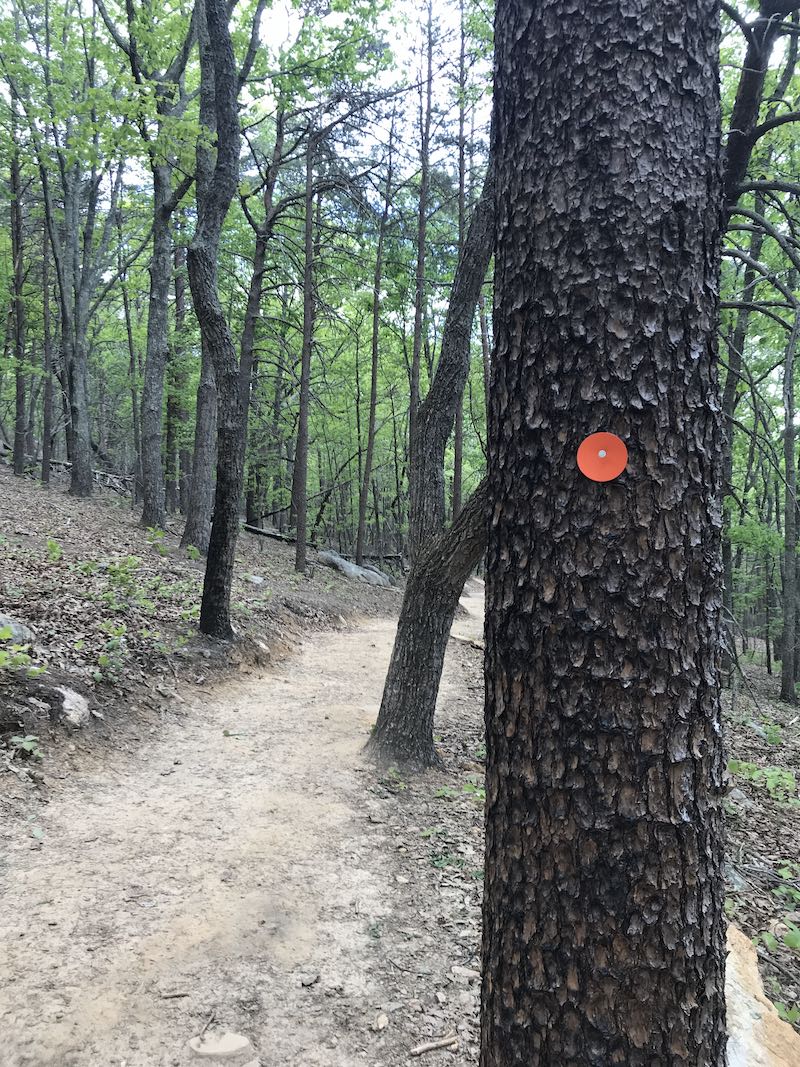 The hike was very enjoyable and, frankly, not what I would consider strenuous, but it had enough elevation change to feel like a proper hike. I allowed an hour to reach the summit, but it only took about 40 minutes or less.
The hike was very enjoyable and, frankly, not what I would consider strenuous, but it had enough elevation change to feel like a proper hike. I allowed an hour to reach the summit, but it only took about 40 minutes or less.
Near the summit, there’s a fork in the trail: if you take a right, it leads to the summit, if you take a left, it’ll lead you on a much longer Ridgeline Trail that will eventually take you into Kings Mountain State/National Park–you’d better believe I’ll try that one day in the future! It would be fun to activate two parks and a summit all on foot.
I took a right at the fork and the .2 mile long trail zig-zagged up the side of The Pinnacle.
I was a little surprised to be greeted by the sign above. It’s true that the summit area is quite rocky and you have to watch your step, but this warning is a bit extreme in my opinion (especially since the SOTA activation I did with my daughter recently was orders of magnitude more dodgy!).
If you are activating The Pinnacle and don’t want to climb up the rocky path, no worries. I’m certain the area where the sign is located is well within the SOTA summit activation zone.
The Pinnacle (W4C/WP-010)
Although The Pinnacle is only a “one point” summit, when you reach the top you’re greeted by some impressive views.
The Pinnacle and Crowders Mountain are both outlying mountains so are the tallest points in the area offering beautiful, long-range vistas.
There were perhaps a half dozen hikers hanging out on the summit. I found a quite spot to set up on the side of the summit only a few meters from the top.
Gear:
On The Air
During the hike, my buddy Mike (K8RAT) sent a text noting that propagation on 40 meters was non existent. He suggested I play on 20 meters and above, possibly including 30 meters.
Later on, I found out that Mike was 100% correct. Several POTA activators that day mentioned on the POTA Facebook group that 40 meters was completely wiped-out.
I installed the Chameleon MPAS Lite vertical antenna next to me. I’ll admit that I was a little worried it might be too rocky to plunge the MPAS Lite’s stainless spike in the ground, but it turned out not to be the case.
The CHA MPAS Lite has really proven itself as an invaluable SOTA antenna. While the stainless spike adds weight to my pack, it’s less fussy than dealing with guy lines and telescoping fiberglass poles and much quicker to set up. You do need enough ground to plunge that spike into, but if there are trees and bushes on the summit, it’s probably doable!
I started recording a video (see below) of the activation, spotted myself to the SOTA network (even though it would have likely auto-spotted me via the Reverse Beacon Network) and hopped on 20 meters.
Solar Flare!
 I had no idea at the time, but we were experiencing a solar flare which explained why 40 meters was completely wiped out.
I had no idea at the time, but we were experiencing a solar flare which explained why 40 meters was completely wiped out.
The effect on 20 meters was simply epic.
I called CQ and was instantly rewarded with a long, continuous string of stations. Within 26 minutes, I had already worked 23 stations with 5 watts and the MPAS Lite vertical. A stark contrast to my previous POTA activation.

And here’s the thing: the flare opened up 20 meters to local/regional stations as well. I worked stations as close as South Carolina, Georgia, and Tennessee–this is simply unheard of normally. Of course, stations on the west coast were also booming in.
I was a little surprised I didn’t log any European stations on 20 meters, but I suspect they were having a difficult time competing with the strong signals from North America during the flare.
I short: the band opening was amazing fun and even renewed my faith in our local star just a wee bit. (Ha ha!)
After playing on 20 meters, I decided to try 17 meters.
Wow! Without a doubt, I worked more stations on 17 meters in short order than I’ve ever worked during a field activation. In 10 minutes, I worked 12 stations. As with 20 meters, the flare opened up stations that would normally be in my 17 meter skip zone.
Here I was worried about logging the ten stations needed to validate my park activation! After logging 35 total contacts, I decided to pack up.
Here’s a QSO Map of the activation (click to enlarge):
Video
Here’s one of my unedited real-time, real-life videos of the entire activation:
(Click here to view on YouTube)
Although the weather app on my phone wasn’t showing any afternoon thunderstorms nearby, there were some patchy dark clouds forming on the other side of the summit and the winds were shifting, so I decided to call it a day and enjoy the hike back down the mountain.
Fortunately, the clouds never amounted to anything but I don’t take my chances with spring weather–it’s fickle, especially along the North Carolina/South Carolina line. That, and frankly, I needed to stick to my travel schedule.
I took my time on the way back down and simply soaked up the outdoors.
I love doing field activations of all types, but I’ll admit that I’m becoming addicted to Summits On The Air because of the hiking opportunities it presents.
There are few things in the world I enjoy more than hiking.
When I’m on a trail, all of my concerns seem to dissolve.
Perspective
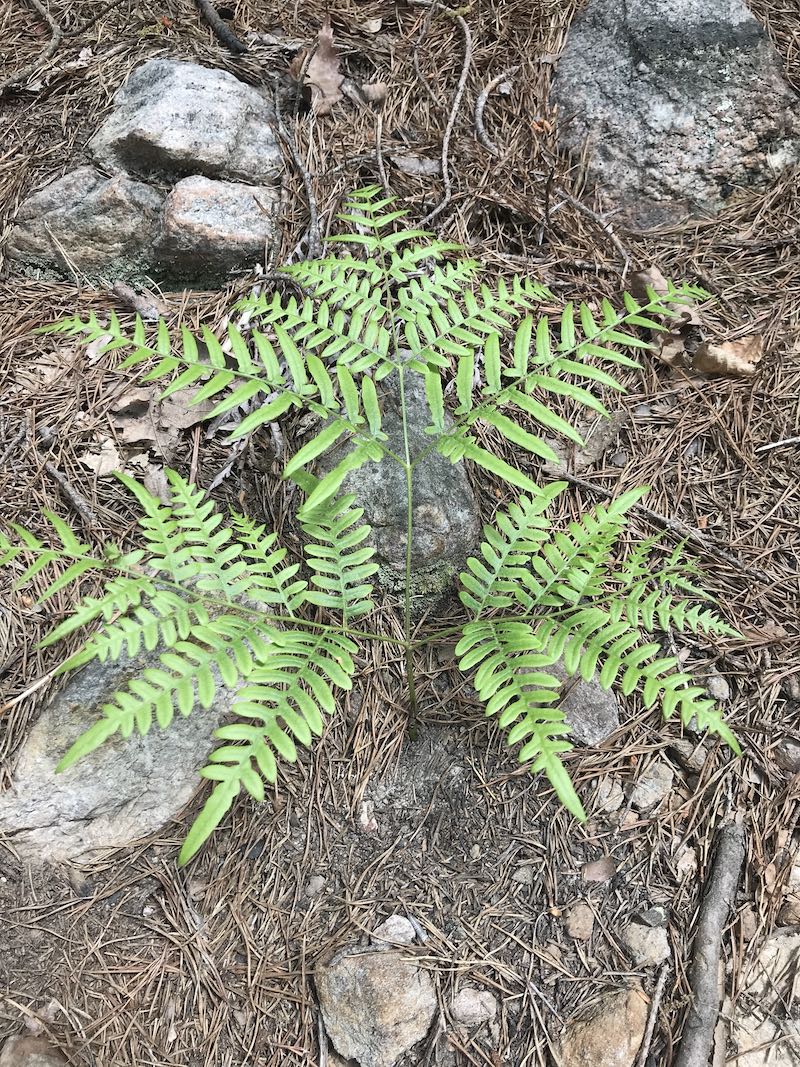 On the return hike, I passed by a group of three hikers. All of them were staring at their phones while hiking and one tripped on a tree root in the path. They caught themselves before hitting the ground.
On the return hike, I passed by a group of three hikers. All of them were staring at their phones while hiking and one tripped on a tree root in the path. They caught themselves before hitting the ground.
I’ll admit I was thinking at the time that mother nature was saying, “Hey! Wake up, disconnect and enjoy the beauty around you! You need some perspective!”
I’m already looking forward to visiting Crowders Mountain State Park again. I believe I’ll return within a month and hike to Crowders Mountain, activating both the summit and park.
Sometime, I’d like to hit the trails as soon as the park opens and, perhaps, activate both Crowders Mountain and Kings Mountain parks on foot. That would likely take an entire day when I include the time on the air, but it would also be a lot of fun.
I was telling my wife yesterday that I actually enjoy writing up the odd field report on QRPer. It hit me that there are a couple of reasons why…
For one, a number of readers have reached out and thanked me because they enjoy living vicariously through my field reports and videos. I get it. My family and I enjoy watching YouTube videos of travelers around the world. We avoid the personality-driven channels and focus more on those that are less “produced.” It gives us an opportunity to travel to, say, Spain, France, Finland, or Turkey when we can’t presently do so. It pleases me to no end thinking that my reports and videos could, even in some very small way, offer a little vicarious travel to others.
Secondly, writing up these reports gives me an opportunity to re-experience some of my field time and sort through photos I might have taken along the way. Although it takes a few hours to write a report, I truly appreciate the experience.
Thank you, dear reader, for spending time with me during this outing!
EQUIPMENT, HAM RADIO, HF, POTA, SOTA, VHF/UHF PARKS, SUMMITS AND ROADTRIPPING by BOB K0NR
Getting out on the road and exploring is always fun, especially if you have ham radio on board. Joyce/K0JJW and I have been doing quite a bit of travel lately and we just completed our longest road trip so far with our RV.

Our main destinations for the trip were four national parks: Congaree NP, Biscayne NP, Everglades NP, and Dry Tortugas NP. This determined the main route but we also found plenty of other things to do along the way. We started in Colorado, cut the corner across New Mexico into Texas, then east through Oklahoma, Arkansas, Mississippi, Alabama, Georgia and South Carolina. Then we headed south to Florida and ended up in Key West. Our return trip followed the gulf coast back to Texas, then back home.
Travel Philosopy
Planning a trip is full of trade-offs, so it is useful to have a general approach that the participants agree on. Our approach to this trip was to not drive too far every day but drive enough to hit the various places we wanted to visit. We are still working to find the right balance. This trip lasted 39 days, covering 6000 miles, which is about 150 miles per day. Some days we drove very little and other days were longer, maybe 400 miles.
Although the trip was created around the national parks, we filled in with interesting stops along the way. In particular, we like to camp at state parks: the campgrounds are great and there’s usually something interesting about the park to enjoy. And did I mention they are natural Parks On The Air (POTA) opportunities? We also tried to work in some Summits On The Air (SOTA) activations that are relatively easy to access.
Rocky Victoria
Our recreational vehicle (RV) is a 2018 Winnebago Paseo, built on a Ford Transit chassis. We named her Rocky Victoria, using non-standard phonetics, but usually just refer to her as “Rocky”.

Compared to your typical car or SUV, this Class B RV is huge. Compared to other RVs, this vehicle is small, about 22 feet long, usually fits in a standard parking space. With all of the normal RV stuff installed (stove, microwave, sink, refrigerator, toilet/shower combo, bed, etc.) there is not a lot of room left for personal gear.
Rocky fits us really well because it is easy to drive, getting in and out of places without much hassle. Also, setup and tear-down time at a campsite is minimal. One limitation is poor ground clearance, which is fine for forest service roads in good condition but not appropriate for offroad use. This affects what SOTA and POTA activations we do.
Radio Gear
We have an ICOM IC-2730A in Rocky, for normal 2m/70cm FM comms while running down the road. The antenna (not visible in the photo) is just a short whip on the driver’s side of the hood.
Rocky is not a big RV so by the time we load up all of our stuff, it is full. So the radio gear (and everything else we take along) must follow the backpacker principle of “take only what you need, use what you take.” No room for extra stuff you don’t use.
For this trip, we took along two ham stations: A basic VHF SOTA station and a capable, picnic-table POTA station.
VHF SOTA Station
The VHF SOTA station is very compact and easy to carry. It covers the 2m and 70cm bands on FM, which is usually sufficient for us. The RF output power is only 5W, so it does not have the punch of one of our higher power radios. Not a bad tradeoff though.
Two Yaesu FT-1DR 2m/70cm handheld transceivers
Arrow 3-element Yagi 2m antenna
Two RH 770 dualband SMA antennas
HT chargers and other accessories
Picnic Table POTA Station
The POTA station is built around the FT-991, which is a 100 watt transceiver (HF/VHF/UHF) that is reasonably compact. We use a 20 Ah LFP battery to power the radio so it is portable and independent of the RV power sources.
Yaesu FT-991 Transceiver (HF, 6m, 2m, 70cm)
End-fed halfwave antennas for 40m, 20m, 17m, 15m, 10m
Roll-up j-pole antenna for 2m/70cm
20-foot fishing pole to support antennas
Two 25-foot lengths of RG-8X coaxial cable
12V, 20 Ah LFP Battery (Bioenno Power)

The POTA station does a great job at a campsite, usually on a picnic table. The POTA station fits inside my Kelty backpack so it can be taken for a hike. It is a bit heavy for a typical SOTA summit but works OK for drive-up and short-hike summits. It can also be set up inside the RV if required.

Typically, we are going to try operating on 20m or 17m so that the halfwave antenna easily hangs from the fishing pole support. Depending on conditions, we often have to use 40m which takes a little more work to hang. Not a huge problem, though.

For portable operating, I’ve tended to use a variety of end-fed wire antennas supported by a non-conductive pole of various sizes. For this trip, we used a 7 meter (21 feet) telescoping fishing pole that collapses to about 30 inches. This pole will fit into my SOTA backpack.

To support the fishing pole directly from the RV, I attached a short length of plastic pipe to the ladder. It is a simple matter to slide the pole into pipe, resulting in the top of the pole being about 26 feet off the ground.

The combination of the two stations gives us a lot of options for ham radio operating.
Summits On The Air
We activated three summits along the way: Mount Scott (W5O/WI-002) in Oklahoma, Choctaw County HP (W5M/MS-001) in Mississippi, and Monte Sano Mountain (W4A/HR-002) near Huntsville, AL.

Monte Sano Mountain turned out to be a unique location because it is located in the Monte Sano State Park. The park surrounds the summit, which is broad and flat. We determined that the park campground is within the activation zone, so we camped there and did both SOTA and POTA activations.
Parks On The Air
We did a number of POTA activations along the way. This was done opportunistically, typically in the afternoon after we had set up our campsite. Our radio operating used SSB on 20m or 40m, along with a few 2m FM contacts.
K-0688 Lake Meredith National Recreation Area US-TX
K-1090 Lake Chicot State Park US-AR
K-1048 Monte Sano State Park US-AL
K-0017 Congaree National Park US-SC
K-1832 Anastasia State Park US-FL
K-0024 Everglades National Park US-FL
K-0635 St. George State Park US-FL
K-2992 Brazos Bend State Park US-TX
Every one of these activations was a lot of fun. There’s nothing like sitting outdoors in the sunshine working a pileup of enthusiastic POTA hunter stations.
Summary
In this post, I emphasized the ham radio activity during this trip. Radio operating was not our main goal but it was a big part of the overall experience. Joyce and I had a fantastic time touring this section of the country, and we are looking forward to our next trip.
73 Bob K0NR
Elecraft AX1 Multi-Band Whip Antenna from https://qrznow.com/
Elecraft AX1 – Portable HF antenna
Elecraft AX1 Ultraportable 17/20 Meter Antenna System (FAQ)
Q: What is the AX1?
A: The AX1 is a dual-band (20 and 17 meter) compact antenna system based on an optimized 2-piece whip.
It intended for use with lightweight transceivers such as the Elecraft KX2 an KX3 that are equipped with an
internal antenna tuner. The AX1 can be configured for HT-style or right-angle use as shown below.
Q: What type of operation is the AX1 designed for?
A: The AX1 is ideal for pedestrian mobile (/PM), where the radio is used hand-held (HT), or for lightweight
“HF Pack.” It can also be used during table-top or trail-friendly (TFR) operation, thanks to the supplied
BNC-L and anti-rotation bail. No poles, trees or other supports are required, so the AX1 can be deployed in
seconds. 17 and 20 meters are excellent bands for this purpose. With 5 to 10 watts, moderately good
propagation, and some patience, 1000 to 2000 mile contacts are commonplace, and DX contacts can also be
achieved. We’ve made many contacts with Europe and Japan from Northern California using the AX1
attached to a hand-held KX2 or KX3.
Q: Is an ATU required?
A: Yes. An ATU is required to resonate the antenna’s high-Q loading coil on each of the two bands. The
nominal resonance is in the 15 to 16 MHz range, allowing the ATU to achieve resonance at either 14 or 18
MHz (20 or 17 meters) with a low SWR. Both the KX2 and KX3 have internal ATUs that store network
settings per-band, allowing you to change bands instantly. (The ATUs have model numbers KXAT2 and
KXAT3 respectively.) Other whip antennas generally require changing coils or taps to cover more than one
band.
Q: Can the AX1 be used on other bands besides 20 and 17 meters?
A: There are two parts to this answer:
(1) If you’re willing to experiment with different loading coils, you could set the AX1’s resonance to any
desired frequency. This requires an antenna analyzer. Enamel wire with a 180-200 C rating must be used to
handle more than just a few watts. Standard enamel wire is rated at only 130-150 C.
(2) As designed, the AX1 may be usable on 30 and 15 meters—at reduced efficiency—because of the
wide matching range of the KX2 and KX3 internal ATUs. Achievable SWR on these bands will vary with
the length of the counterpoise wire and other factors.
Q: In what way is the AX1 “Ultraportable”?
A: The AX1’s base unit (2.5” long x 1” diameter) and telescoping whip (6” collapsed) are separate, allowing
the entire antenna system to fit into a small pocket or in very small carrying cases such as our CS40 and
CS60. Total weight is just 4.0 ounces. During operation, the AX1 can be attached directly to a radio being
used hand-held (HT-style), or used with a BNC-L and the supplied anti-rotation bail for table-top use.
Q: What is included with the AX1 antenna system?
A: The AX1 comes with:
• 3” base/loading coil with male BNC connector and
• counterpoise wire socket (for mini-banana plug)
• rugged 44” telescoping whip with 3/8”-24 threaded mount; collapses to 6”
• anti-rotation bail for table-top use
• BNC-L adapter for table-top use
• mini-banana plug for use with a counterpoise wire
Q: How is the anti-rotation bail used?
A: If you’re operating the radio on a flat surface, the AX1 is attached via a BNC-L adapter. The anti-rotation
bail is then installed so that it contacts the flat surface, thus preventing the whip from pivoting on the BNC-L
connector. The anti-rotation bail and BNC-L are not needed for hand-held (HT style) radio use.
Q: How does the AX1 compare to other portable antennas?
A: The AX1’s performance is similar to that of other electrically short (~4 foot) whips. But it is more
versatile because it covers two bands, breaks into two small pieces for transport, has an attachment point for
a counterpoise wire, and includes an anti-rotation bail for table-top use. (Note: A modest-length wire-in-atree
antenna will generally outperform a short whip, and can be matched on more bands with the radio’s
ATU. So we recommend that, along with the AX1, you always carry two ~25-foot lengths of
stranded/insulated wire and a BNC-to-binding-post adapter. Use the wire antenna if you have time…and a
tree!…and you need maximum performance from your station.)
Q: Do I need a counterpoise wire? How long?
A: For transmit, you must use at least one counterpoise wire, for both safety and efficiency reasons.
Without one, your transmit signal will be typically 20 dB lower, and there may be more RF on the radio’s
chassis. We recommend a 13’ insulated/stranded “dragged” counterpoise wire for pedestrian mobile use.
Q: How much power can the AX1 handle?
A: The suggested maximum is 15 watts, though we’ve successfully tested it at 25 watts.
Q: Can the AX1 be used with other whips?
A: The AX1 will work any whip having a 3/8”-24 threaded base. If the whip is 44” long, the AX1’s normal
resonance will be preserved. A longer whip could be used to move the resonance point closer to 20 meters,
offering a slight improvement in performance. Resonant frequency must be determined experimentally.
Q: Could multiple AX1s be used to make a dipole, Yagi, etc.?
A: In theory, multiple AX1s could be used to make more complex antennas, and we may experiment with
this idea ourselves. However, since the AX1’s radiator is electrically short, performance will not be
comparable to full-size antennas, even it were elevated to ¼ wavelength above ground (the minimum
recommended for parasitic arrays). Also, the AX1 is intended to be used with an ATU. If used in a coax-fed
antenna of any type, the base loading coil would have to be carefully trimmed to achieve resonance on a
single band. Any parasitic elements would have to be adjusted as well.
Q: Can the AX1 be used in bicycle or mobile applications?
A: Bicycle mobile—yes. But not on any vehicle moving faster than about 20 MPH. The AX1 uses a BNC
connector and a telescoping whip, components that are not compatible with high wind loads.
